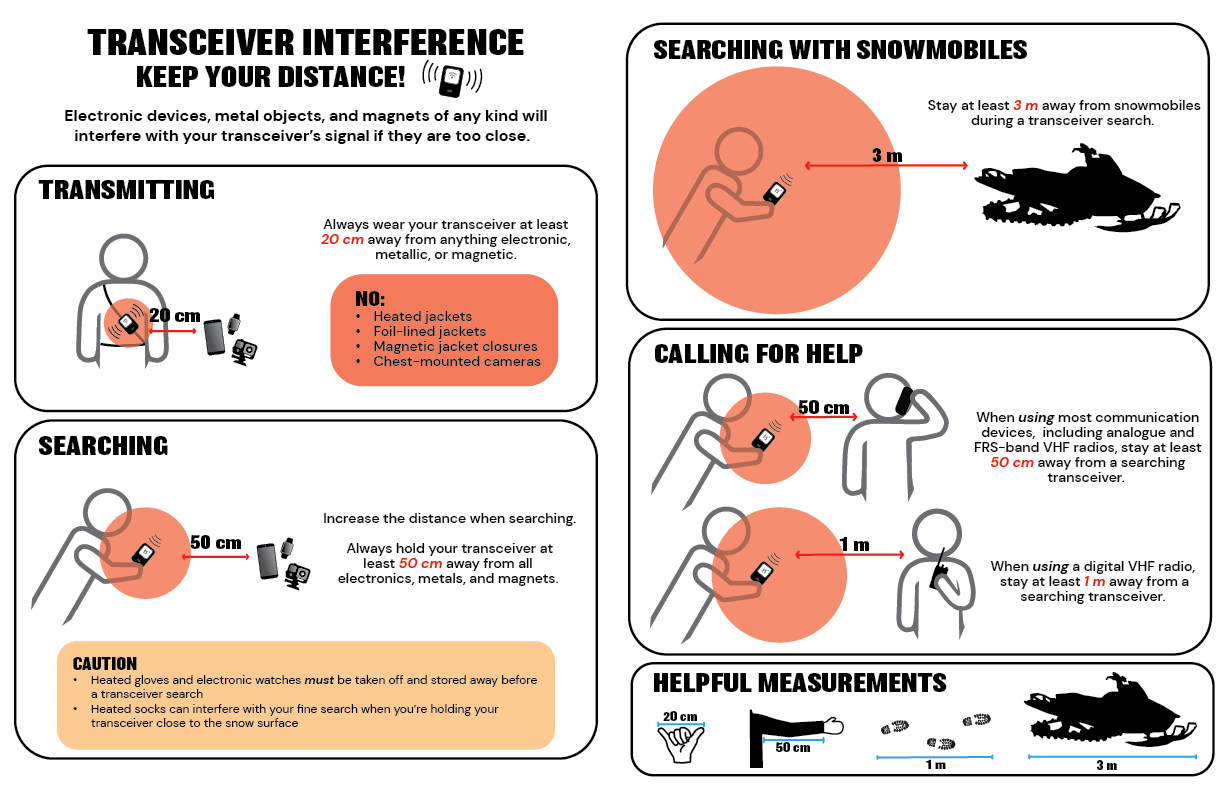Avalanche transceivers are susceptible to interference by electronic devices, metal objects, and magnets if they are too close.
The guidance below provides practical guidance on how to avoid problems with interference. It was created through a collaboration by Avalanche Canada, the US National Avalanche Center, Colorado Avalanche Information Center, Utah Avalanche Center, Northwest Avalanche Center and the six avalanche transceiver manufacturers: Arva, BCA, Black Diamond, Mammut, Orthovox and Pieps.

You are encouraged to distribute the information under the following terms:
- You may use the complete pages or take components or ideas from the pages to use in other materials.
- You may include images and text in documents or on websites that contain your organization's branding, but refrain from adding branding or text in a way that makes it appear as though your organization was the sole source of this information.
- Please keep the technical ideas intact and unmodified, including the recommended distances and types of incompatible devices.
- Please refrain from adding additional steps for end-user messaging that may seem well-meaning (e.g. switch all electronics off prior to searching) but ultimately could negatively impact safety by adding time, complexity or confusion. The guidance here has been carefully considered by numerous experts to give the best overall outcomes when using transceivers in an environment where other small, portable electronic devices exist.
- The guidance is aimed at normal recreational use. Professional, industrial or search and rescue users may encounter additional sources of interference that could warrant modified procedures

